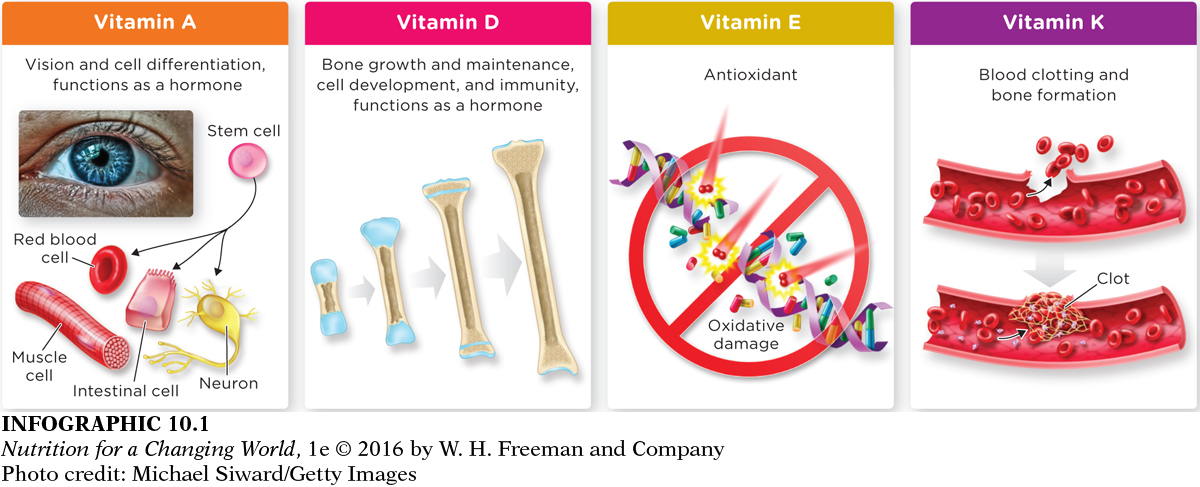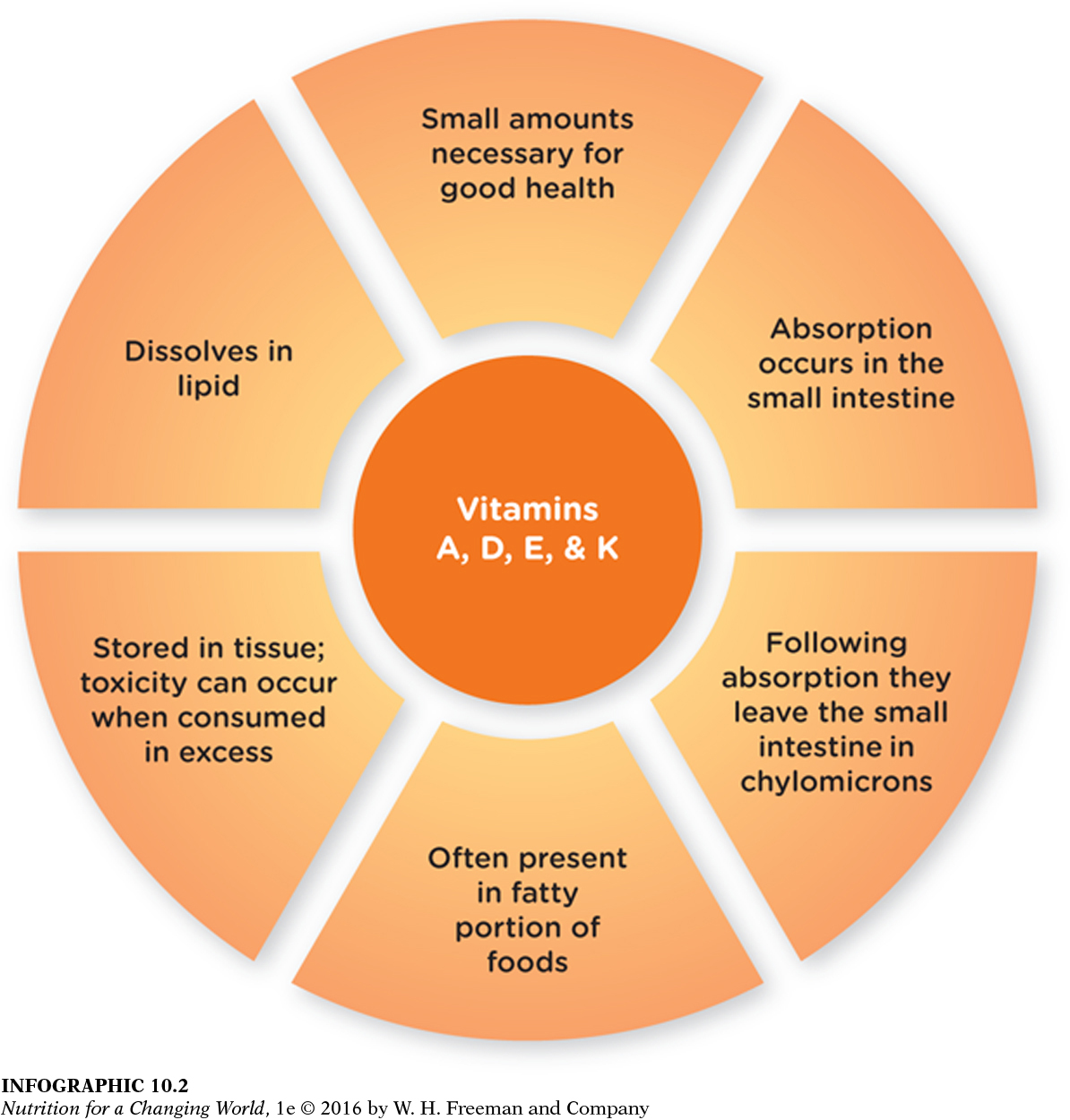PROPERTIES OF FAT-SOLUBLE VITAMINS
The four distinct fat-soluble vitamins that are required by the body are vitamins A, D, E, and K. The fat-soluble vitamins have diverse functions in the body. For example, vitamin A is involved in eyesight, while others are involved in such roles as bone growth, blood clotting, and antioxidant activity. (INFOGRAPHIC 10.1)
INFOGRAPHIC 10.1 Primary Functions of Fat-Soluble Vitamins Fat-soluble vitamins are stored in your body and used when your dietary intake falls short. Each fat-soluble vitamin plays an important role in the body.

Because fat-soluble vitamins are not soluble in water, they generally need the presence of dietary fat and the assistance of bile to be absorbed effectively. Once they are absorbed, fat-soluble vitamins, like fats, typically leave the small intestine in chylomicrons via the lymph. They aren’t excreted as easily as water-soluble vitamins, which means they are more likely to cause toxicity. But this rarely occurs with the exclusive consumption of vitamins that are naturally present in food—mostly, it is the result of consuming fortified foods and supplements at levels that exceed established Tolerable Upper Intake Levels (ULs).
When we take in more of a fat-soluble vitamin than we need, it—again, like fat—is stored in fatty tissues and the liver, from which it is released when the body needs it. And since the body may have significant stores of fat-soluble vitamins, deficiency symptoms and disease may take longer to appear than with water-soluble vitamins, which are not stored in significant amounts. Although each vitamin has its own distinct functions, metabolism, and mechanism of action, there are some general properties to keep in mind. (INFOGRAPHIC 10.2)
INFOGRAPHIC 10.2 Properties of the Fat-Soluble Vitamins

Question
10.1
 Under what circumstances might a person be at risk from a deficiency of fat-soluble vitamins?
Under what circumstances might a person be at risk from a deficiency of fat-soluble vitamins?
A person might be at risk for a deficiency of fat-soluble vitamins if they have an illness that impairs the absorption of fat.


 Under what circumstances might a person be at risk from a deficiency of fat-
Under what circumstances might a person be at risk from a deficiency of fat-